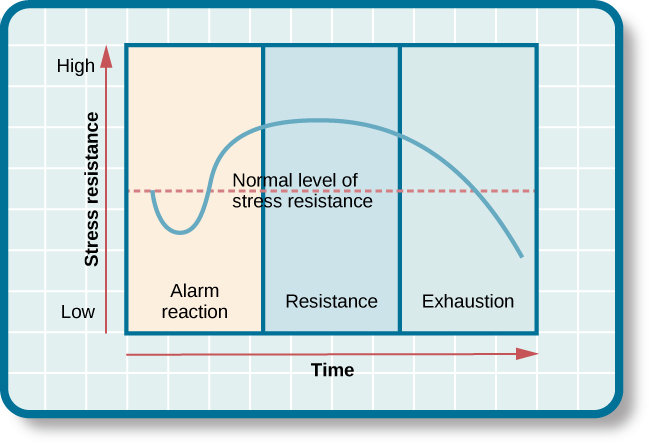You may have seen or heard us use the words “Periodised Training” when describing our services, which definitely makes us sound professional and fancy. But what is periodised training? Unfortunately, it doesn’t mean that you only train for a period and then stop because you have your gains for life. We wish that was a thing too. Periodised training is training planned over a long period that is broken up into blocks with different focuses, training intensities and training formats. Why is this necessary? It is critical if you are working toward a long-term goal, or if you’re an athlete with multiple physical components to work on, or if you just want to maintain your health and progress your programs. Periodisation helps to compartmentalise your training into building blocks to get you to where you want to go.
- General adaptation syndrome
- How do we periodise?
- Interference
- Benefits
- Applications
- Appendix
General Adaptation Syndrome
To understand periodisation and why it is necessary we need to step back and look at the concept of General Adaptation Syndrome and its 3 stages (alarm, resistance, exhaustion). Strangely, our body doesn’t really like stress….(go figure), but it does a very good job to respond and adapt to it. When we exercise, we induce changes to occur in the immune, endocrine, cardiorespiratory, musculoskeletal and nervous systems as a response to the type and volume of stress the body has experienced, otherwise known as the Alarm stage. Acutely, our systems become fatigued, damaged or inflamed and this results in us feeling mainly tired and sore. Following this in the resistance stage (2-7 days post), the body builds and improves mechanisms to cope with this stress and even more. Lastly, if we do not allow our body to rest and recover, we reach the exhaustion phase. During this period, the body’s systems start to reduce in performance due to prolonged and monotonous stress exposure and the depletion of its resources. This is often coupled with injury and sickness. By utilising periodisation in our programming, we hope to keep our clients between alarm and resistance and look to avoid exhaustion.

How do we periodise programming?
A program can be split into 3 components – Micro cycles (5-10 days), Meso cycles (3-8 Micro cycles) and Macro cycle cycles (8-12 Meso cycles). A Micro cycle is most commonly a training week and Meso cycles are a collection of training weeks where load, volume and exercise selection are manipulated in each Micro cycle to produce stress toward a particular focus. Meso cycles may have an overall general focus (i.e. strength, power) with secondary focuses as well and reps, sets and exercise selection reflect this. Macro cycles are the overall big training blocks – a football season, six-month training block, competition lead up.
Avoiding interference
For athletes and the general population there are many physical components involved in successful performance as well as healthy living. However, if we try to improve all fitness components all at the same time, we can end up going nowhere fast. This is because different physiological changes are needed to improve certain physical components. For example, strength training improves the size and contractility of mainly type 2b (large anaerobic) muscle fibres while cardiovascular training improves the aerobic capacity of and endurance of mainly type 1 (small aerobic) and 2a (large mixed) muscle fibres leaving muscles largely unchanged in size for better efficiency. This physiological disparity is called the interference effect and can impact how much progress is made toward a certain goal. By splitting focuses across different Meso cycles, we can ensure each component is worked on with as little interference as possible. There will always be some crossover of fitness components as we can’t isolate only one component and for the most part, they complement each other. However, you want to ensure that all your hard work is going toward improving the correct systems to get you toward your goals.
Benefits
The benefits of periodised training compared to single program or random program selection help to provide so much more direction and efficiency in training. By having focuses for short intensive periods you ensure that you are improving the fitness components that you want to. It also helps to provide a logical progression to training whereby you can create a solid foundation and then start get more specific as you progress. Lastly, by having a plan that controls for volume and intensity, you reduce your risk of injury meaning you can train for longer and give yourself the best chance to succeed.
Applications
After reading all these fancy, “sciencey” terms periodisation can seem quite complex but there are considerations you can take into account when planning your own workouts.
- Start with the end in mind – Work out what are the most vital fitness components to you achieving your goals – complete a half marathon (aerobic and endurance), deadlift your body weight (strength and power). These are components that will need to be prevalent throughout your macro cycle.
- Break up your time into Meso cycles. Build up your focuses like a pyramid and ensure you start general and work to more specific. For example,
- Walk before run – slow before fast
- General strength before specific strength
- Build volume slow
- Master technique before increasing weight
- Strength before power
- Build your micro cycles ensuring you have a gradual but sustainable overload each week.
- Ensure you have the occasional deload week every 3-6 weeks to ensure you don’t reach exhaustion.
We have attached some great articles that we think can help you wrap your head around periodised training. When it comes to periodisation the science gives us guidelines to stay within, but a great part also comes from trial and error, and this is where good coaches and experience professionals can help – those that are able to advise on experience and reason when there is no evidence to guide.
If you would help with your programming, feel free to get in contact !



0 Comments